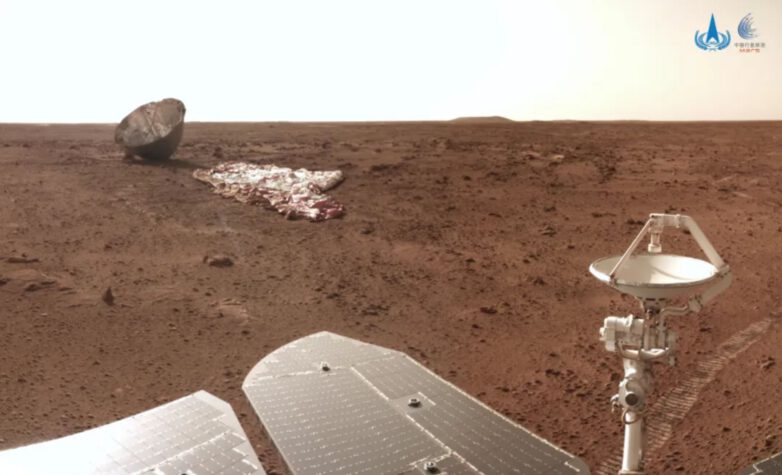
HELSINKI – China is tightening the details of its Tianwen-3 mission to collect samples from Mars and deliver them to Earth.
New mission details and defined objectives were revealed in presentations made at the International Conference of Deep Space Sciences in Hefei, Anhui province, on April 22.
The mission will use a pair of Long March 5 rockets to send two separate spacecraft stacks toward the Red Planet around 2030 with the goal of collecting and returning 500 grams of samples.
The mission’s goals include searching for evidence of life on Mars, understanding the environmental and climatic evolution of the Red Planet, and its potential past habitability.
The two Long March 5 launches will carry a landing and ascent vehicle and an orbiter and return module, respectively. Entry, descent and landing will build on technology used for the Zhurong rover landing as part of China’s Tianwen-1 Mars mission.
Sampling is coming, as with China’s 2020 Chang’e-5 Lunar sample return missions, use a lander-based robotic arm to collect surface samples and a drill to collect material from up to two meters below the surface.
In a new development, the landing segment will also have limited capacity to collect samples near the landing site, using either a six-legged crawler robot or an Ingenuity-like helicopter. Chinese Academy of Sciences (CAS) presented a prototype of the latter in 2021.
Collected samples will be sent to Mars orbit using a two-stage ascent vehicle. It will consist of a solid first stage and a liquid propellant upper stage with a total mass of at least 360 kg.
The ascent vehicle will then dock with the orbiter and return module, with docking assisted by a robotic arm. Collected material will then be transferred to the return module for return to Earth.
The vague launch timeline suggests, but does not confirm, a slippage from a previously stated 2028 launch timetable.
A mission profile for China’s Mars sample return presented in June 2022 targeted launch in late 2028 with samples delivered to Earth in July 2031.
The 2028 timeline would see samples delivered to Earth before then NASA-ESA Mars Sample Return mission. The mission also aims to deliver approximately 500 grams of Mars samples to Earth.
Landing site selection is conducted with invited input from international teams. Technical limitations mean that the landing will take place between 17 and 30 degrees north latitude, due to energy and lighting requirements. The landing ellipse will be 50 by 20 kilometers.
Intended sites must have an elevation of at least 3,000 meters below zero, or equivalent to sea level on Earth. This gives the lander more atmosphere to move through to slow the descent to the Martian surface.
Site selection will also be balanced by scientific objectives. The chosen site will need to be considered of astrobiological relevance, with Martian terrain older than 3.5 billion years being prioritized.
Environments suitable for the emergence of life and its preservation, such as sedimentary or hydrothermal systems, evidence of past water activity and geological diversity were noted as key priorities. The
The mission will also adhere to the highest standards of planetary protection protocols, according to the presentations.
Liu Jizhong from the director of China’s Lunar Exploration and Space Program Center under CNSA, and Hou Zengqian from the Institute of Geology, Chinese Academy of Geological Sciences delivered presentations in Hefei, which was later shared on Chinese social media.
Related
#China #include #helicopter #Mars #return #mission